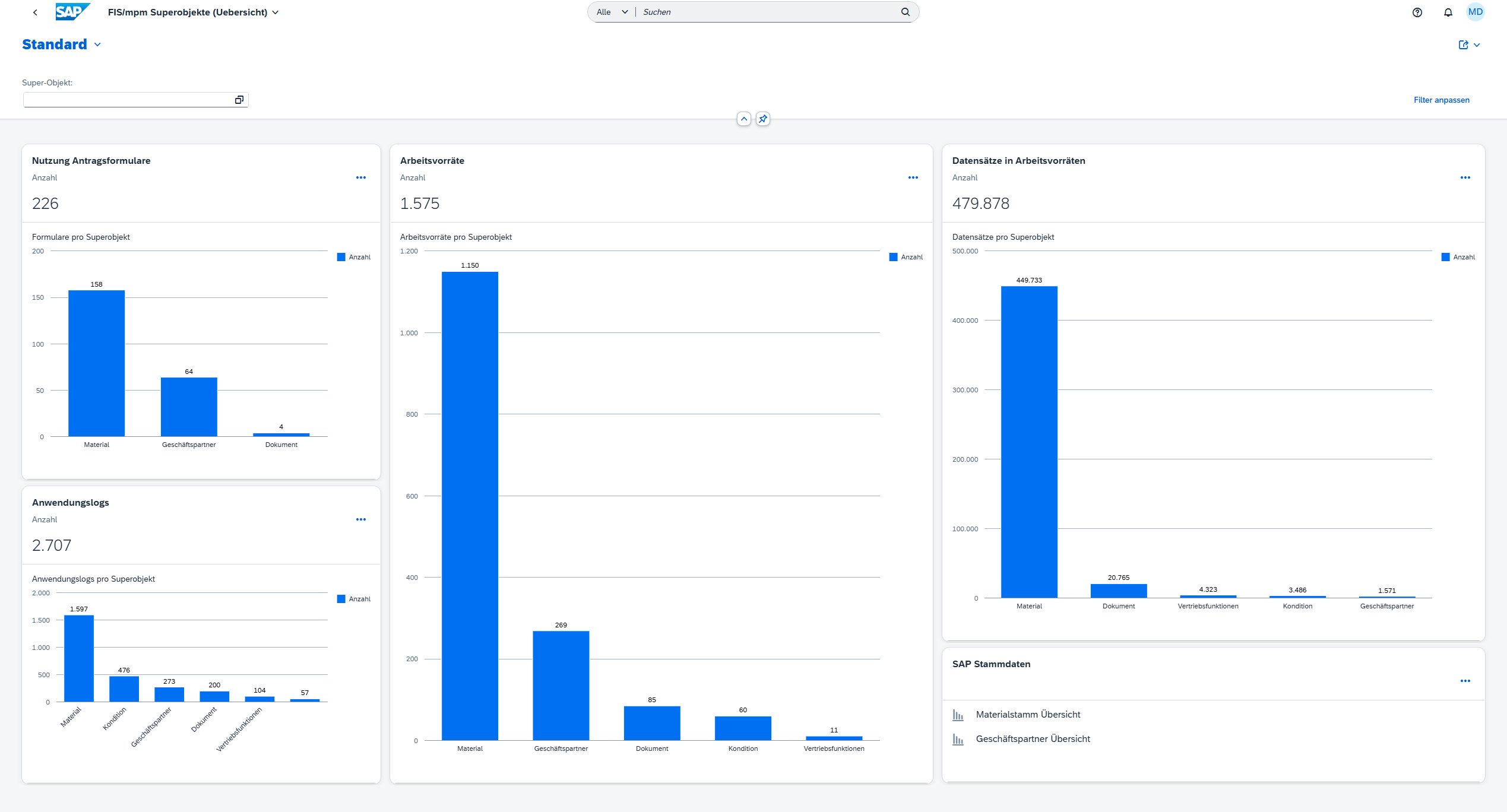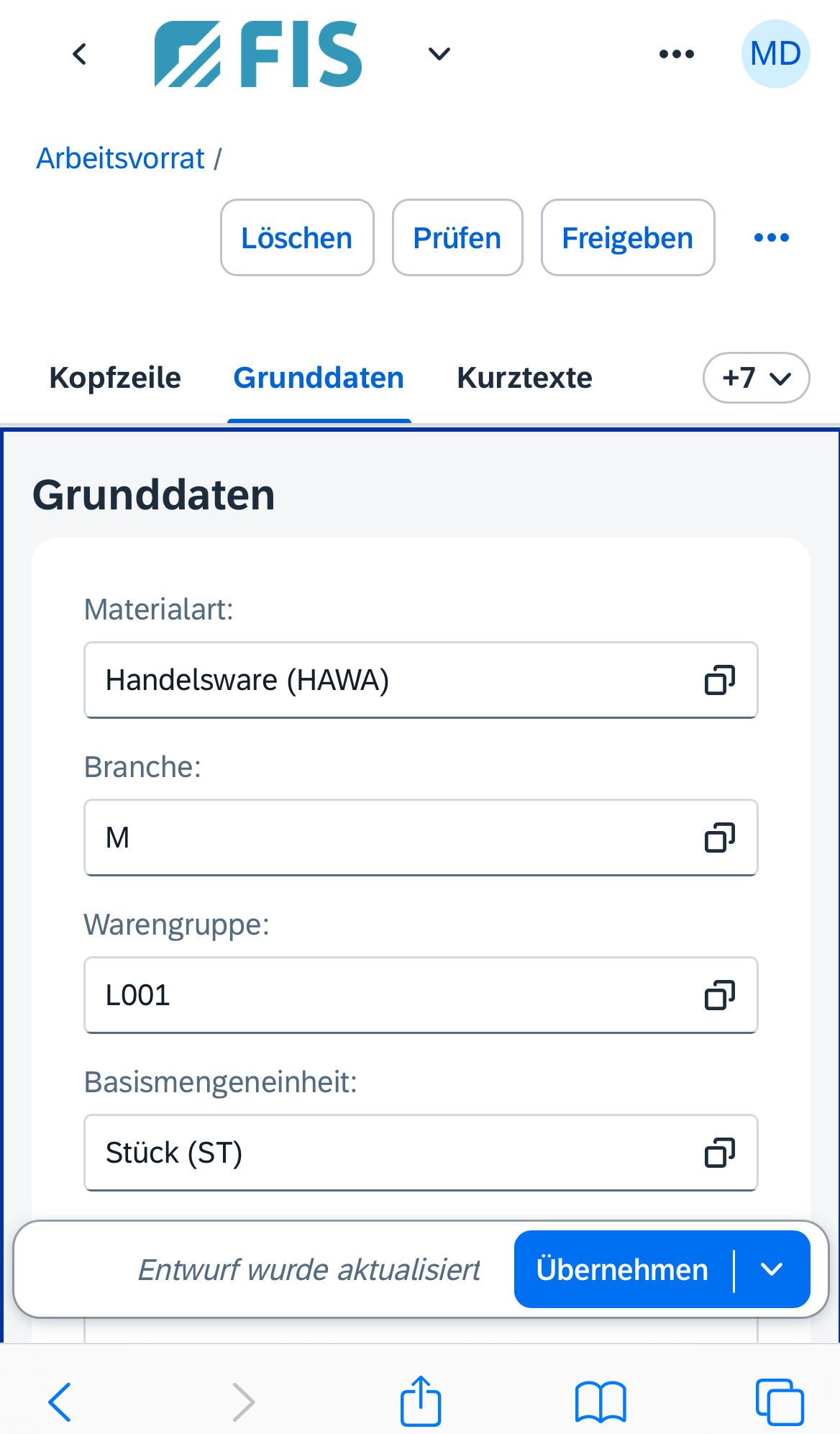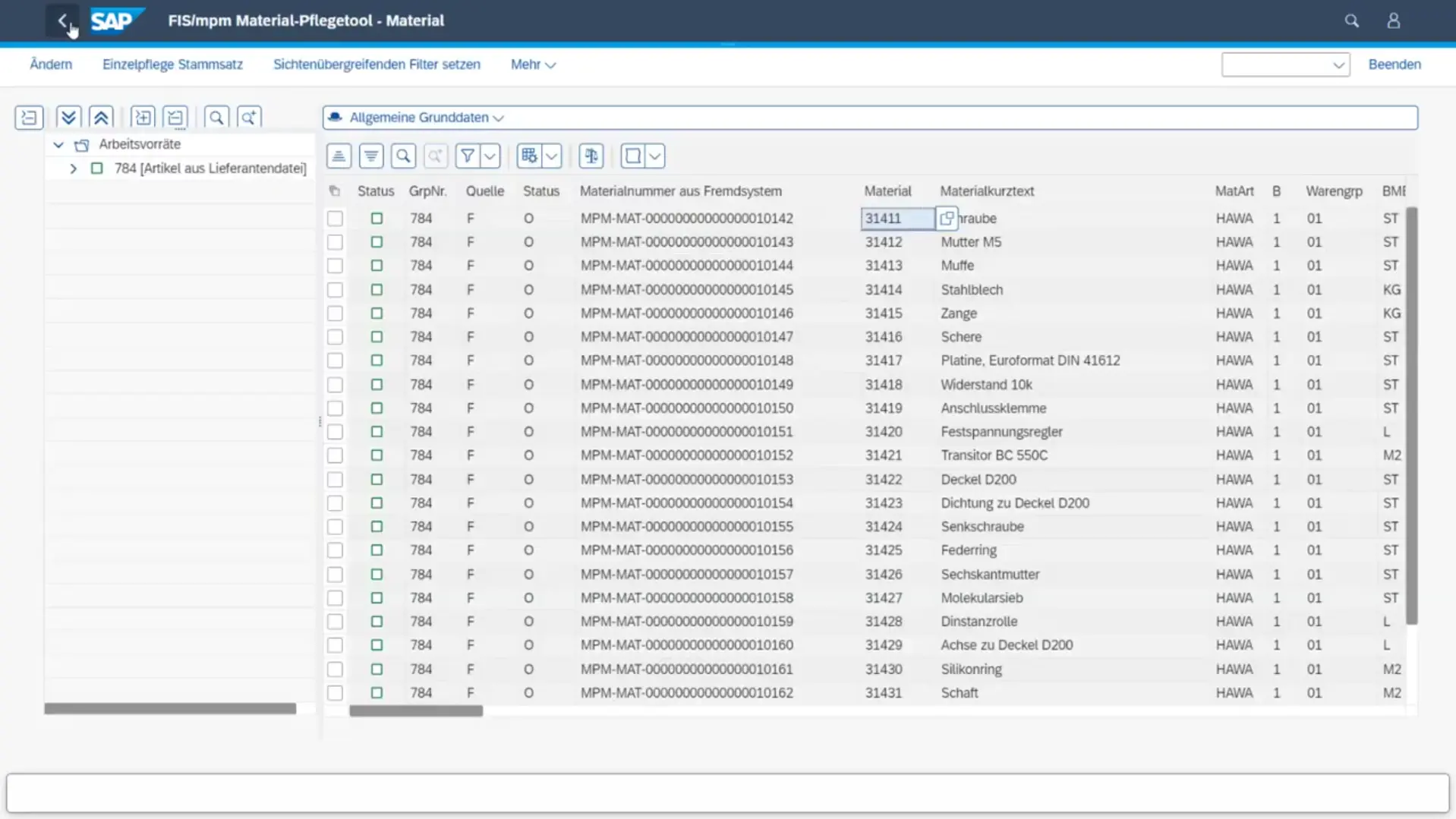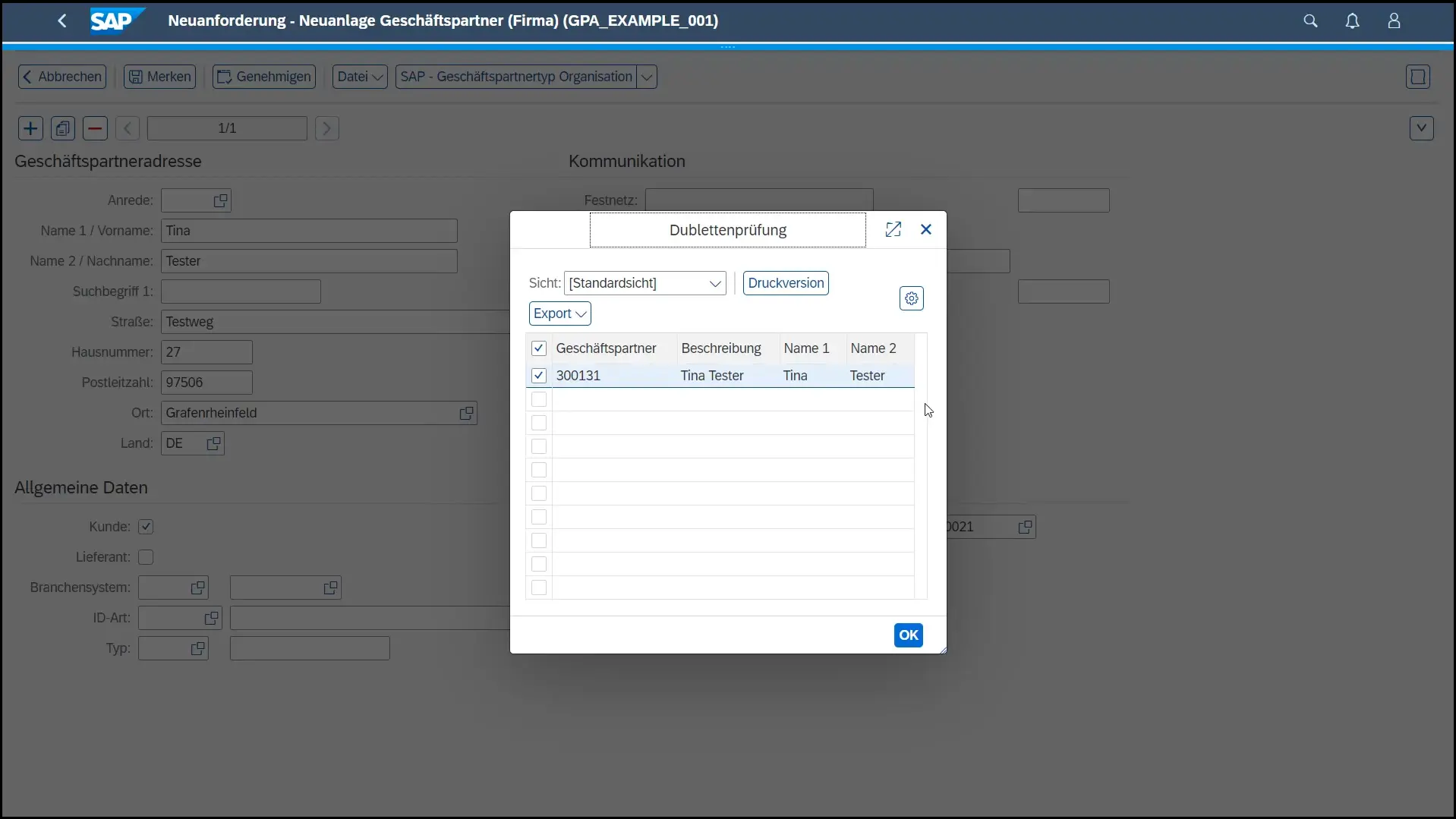Master data management
This specialist article describes the efficient creation, maintenance and management of your master data with FIS/mpm, the SAP optimization for your master data management.

Product Manager
- What is FIS/mpm?
- What functions does FIS/mpm include?
- How does the SAP master data management process work with FIS/mpm?
- With just one click – FIS/mpm in use
- What are the benefits of FIS/mpm?
- How does FIS/mpm help with the SAP S/4HANA transition?
- How far have other companies come with the S/4 HANA transition?
- How does the FIS/mpm shadow database ensure an efficient data transfer?
- How does the FIS/mpm analysis tool make sure that data is always complete and up to date?
- How can you benefit from artificial intelligence in master data management?
- Conclusion
- FAQ – Frequently asked questions
What is FIS/mpm?
FIS/mpm is an SAP partner solution for efficient master data management. It is used to create, maintain and manage master data efficiently, quickly and with little effort. It significantly increases data quality. The assurance of high data quality and efficiency in data provision are a key infrastructural prerequisite for the success of your company.
Business decisions in industry and commerce 4.0 are increasingly based on reliable data. A solid master data management is becoming more and more important due to the increased data volume, particularly in the context of big data, analytics and artificial intelligence. The data quality significantly influences the added value of a company and its SAP system and data becomes an important production factor with highest quality standards.
What functions does FIS/mpm include?
The FIS optimization supports you in maintaining master data in SAP even before the data is transferred to the production system and, therefore, significantly increases data quality. The data is only transferred to the system after successful validation and execution of check routines. Here, the software solution also relies on the integration of an internally developed AI service for harmonizing master data. As a consequence, simple, fast and intelligent master data management in SAP is the central advantage of FIS/mpm.
FIS accelerates the processes of your SAP master data management and verifies weak points. Using this solution, master data maintenance processes are executed as quickly as errors are corrected. It goes without saying that the SAP solution optimized by FIS also supports the processing of mass data. Field-tested workflows simplify master data processing by your employees and ensure faster processing times of master data processes. An important FIS/mpm aspect is the user-friendly creation and change of master data via Web forms, for instance.
For your purchasing and procurement
The purchasing-relevant data particularly includes purchasing info record, article data, source list, rebate, prices, conditions and vendor master or business partner master.
For your sales
This includes, for instance, rebates, conditions, sales BOMs, customer or business partner master as well as specific SD functions (e.g. cross-selling), material substitution and listing or exclusion.
For your production
How does the SAP master data management process work with FIS/mpm?
FIS/mpm is used to save the inbound data of business partners, such as customers and vendors, in a separate worklist outside the SAP production system at first. Within the application, this data is automatically enriched and checked against duplicates. FIS/mpm also enables mass creations and changes of master data. Efficient working is also ensured by automatic view enhancement, which is used by the persons responsible to create, for instance, material masters for different plants with just one click. If company employees maintain a master data record, they can enter these changes into a workflow in order to have them enriched or checked by defined contact persons or departments. Once successfully released by the person responsible, the data will finally be transferred to the SAP standard tables and will be available live for all users in the system.

With just one click – FIS/mpm in use
Importing a vendor catalog
The FIS/mpm master data solution enables SAP users to import external data, such as a vendor catalog, quickly and efficiently and process it easily in a secured area, i.e. the worklist. Automated creation makes manual maintenance efforts almost entirely unnecessary. Get an insight here into the master data management solution.
What are the benefits of FIS/mpm?
How does FIS/mpm help with the SAP S/4HANA transition?
Within the framework of a large IT project, such as the transition from SAP ECC to SAP S/4HANA, it makes sense to consolidate and harmonize master data and get rid of obsolete data. In the new SAP S/4HANA ERP system, customer and vendor master data is moreover mapped using the business partner or the SAP Business Partner solution. FIS/mpm supports SAP users when it comes to quickly and correctly consolidating and synchronizing master data objects from the old system into the new one. Duplicate checks avoid duplicate creations of business partners. Last but not least, SAP users benefit from structured master data in SAP S/4HANA. The FIS professionals have a broad-based know-how in SAP S/4HANA transition and provide assistance with the preparation, Customer Vendor Integration and implementation of the new ERP system.
How does the FIS/mpm shadow database ensure an efficient data transfer?
Maintaining and storing big datasets is very time-consuming and cost-intensive. Due to the multitude of articles, it is particularly important in trade to automate the data creation and maintenance processes and keep data retention costs low. The FIS/mpm shadow database guarantees efficient master data management in your company.
The FIS/mpm shadow database is used as an external data basis for subsequent processes. Here, data with minimum requirements, such as basic product information, simple descriptions and prices, can be decoupled from the SAP live system and kept in the optimally integrated shadow of FIS/mpm. Due to the consistent SAP integration, this data can continue to be used actively and processed in the ERP system. The reduced data volume requires significantly less maintenance efforts. Only if the information stored in the shadow master is required in the live system (e.g. if the product was ordered) will it be transferred to the ERP system, enriched and created as an article. This enables you to accelerate your processes and reduce the data retention costs.
Click the following link to read more about individually implemented application scenarios for the FIS/mpm shadow database and the possibilities and potentials of such a database.
How does the FIS/mpm analysis tool make sure that data is always complete and up to date?
It is a great challenge for companies to always keep the dataset correct and up to date in the system. It is not often that all data is checked and compared regularly as this is very complicated. Here, the FIS/mpm analysis tool provides assistance.
The analysis tool either checks the data at defined points in time or initiates the entire dataset manually by means of parameterizable criteria. In this way, for instance, the completeness of customer address data is checked regularly. Afterwards, FIS/mpm can be used to start a data maintenance process for erroneous data records. This process transfers the incomplete or erroneous data records in an automated way to the corresponding person responsible for further processing. It is also possible to fill the fields in an automated way if, for instance, the information of another field is identical or indicative of the field content. In this way, the completeness and correctness of all data records can be permanently improved without major manual efforts.
How can you benefit from artificial intelligence in master data management?
The use of artificial intelligence (AI) makes master data management even more efficient in many areas. The process of importing master data, for instance, is a time-consuming task when implemented manually as incoming data must be transferred into the correct structure and tables. The challenge of automating the import process of incoming data: recurring files usually do not have the same structure and often have different names.
By using AI in the form of self-learning mappings, the import of incoming master data can be accelerated and automated. The intelligent mapping of FIS assigns external files that would require a new mapping directly in the SAP system using classification algorithms. Any types of mappings can be created, such as material master, vendor master, customer master or business partner. The time-consuming manual definition of new mappings is eliminated, saving you time and reducing potential errors.
In addition, FIS offers an AI service for harmonizing master data. Using an integrated AI service, FIS/mpm consolidates, for instance, master data of a business partner (e.g. address and contact data of vendors and customers) from different systems in one central user interface. It verifies the data, cleans it from duplicates and, if required, enriches it with additional information.
Conclusion
Successful master data management as the core of a sustainable company.
Elaborate master data management is no unique project but an ongoing task, which has a major influence on corporate success. Clean, consistent and centrally maintained master data is the basis for efficient business processes, well-founded decisions and successful digital transformation.
Companies investing into a structured master data management benefit from higher data quality, reduced process costs and increased compliance and data governance. Moreover, standardized master data enables a seamless integration with advanced technologies, such as AI and cloud systems.
Master data is the central core of every company: it keeps processes running, ensures consistent data flows and sets the decisive pace for sustainable growth.






